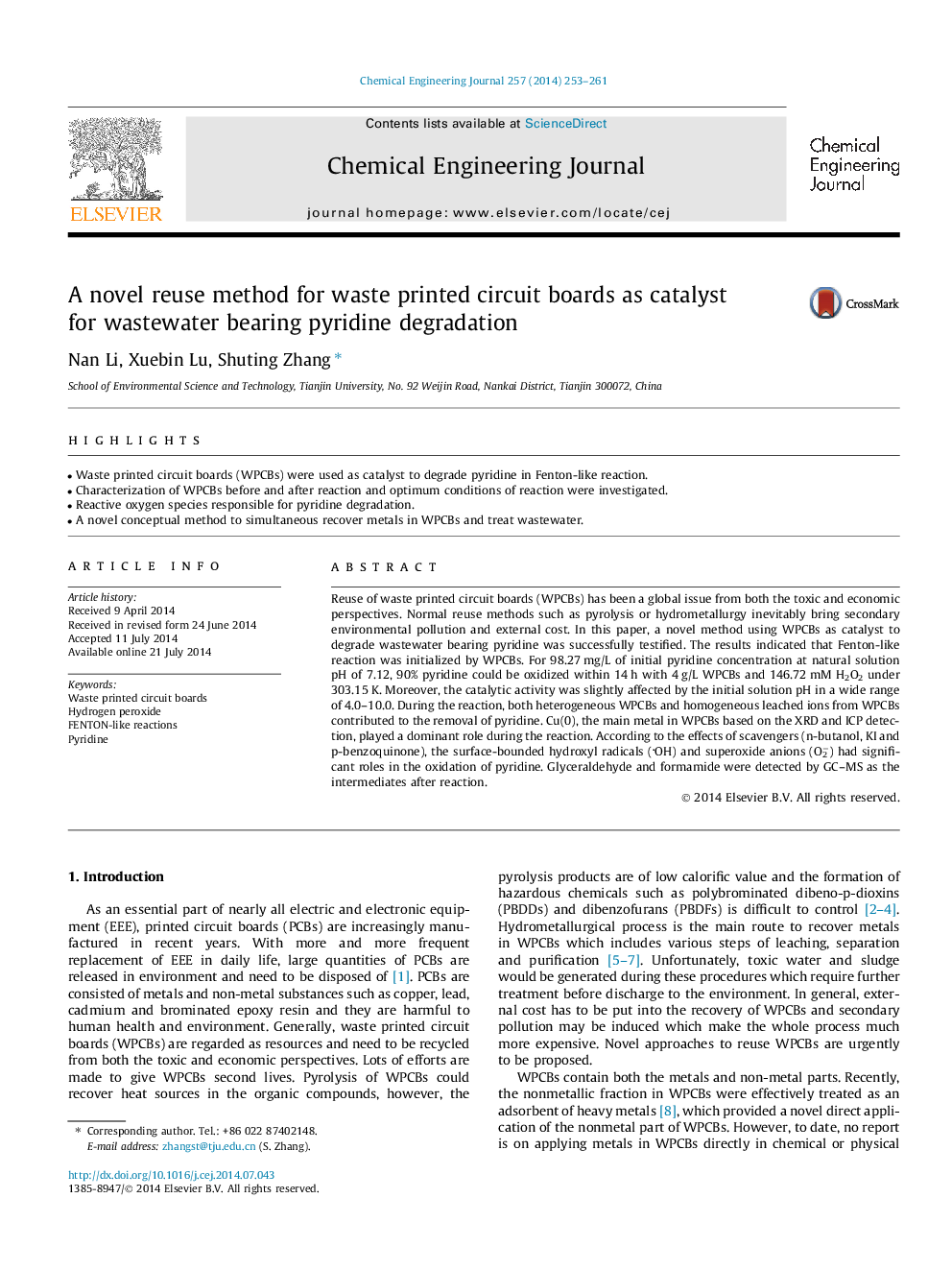| Article ID | Journal | Published Year | Pages | File Type |
|---|---|---|---|---|
| 147328 | Chemical Engineering Journal | 2014 | 9 Pages |
•Waste printed circuit boards (WPCBs) were used as catalyst to degrade pyridine in Fenton-like reaction.•Characterization of WPCBs before and after reaction and optimum conditions of reaction were investigated.•Reactive oxygen species responsible for pyridine degradation.•A novel conceptual method to simultaneous recover metals in WPCBs and treat wastewater.
Reuse of waste printed circuit boards (WPCBs) has been a global issue from both the toxic and economic perspectives. Normal reuse methods such as pyrolysis or hydrometallurgy inevitably bring secondary environmental pollution and external cost. In this paper, a novel method using WPCBs as catalyst to degrade wastewater bearing pyridine was successfully testified. The results indicated that Fenton-like reaction was initialized by WPCBs. For 98.27 mg/L of initial pyridine concentration at natural solution pH of 7.12, 90% pyridine could be oxidized within 14 h with 4 g/L WPCBs and 146.72 mM H2O2 under 303.15 K. Moreover, the catalytic activity was slightly affected by the initial solution pH in a wide range of 4.0–10.0. During the reaction, both heterogeneous WPCBs and homogeneous leached ions from WPCBs contributed to the removal of pyridine. Cu(0), the main metal in WPCBs based on the XRD and ICP detection, played a dominant role during the reaction. According to the effects of scavengers (n-butanol, KI and p-benzoquinone), the surface-bounded hydroxyl radicals (OH) and superoxide anions (O2−) had significant roles in the oxidation of pyridine. Glyceraldehyde and formamide were detected by GC–MS as the intermediates after reaction.
